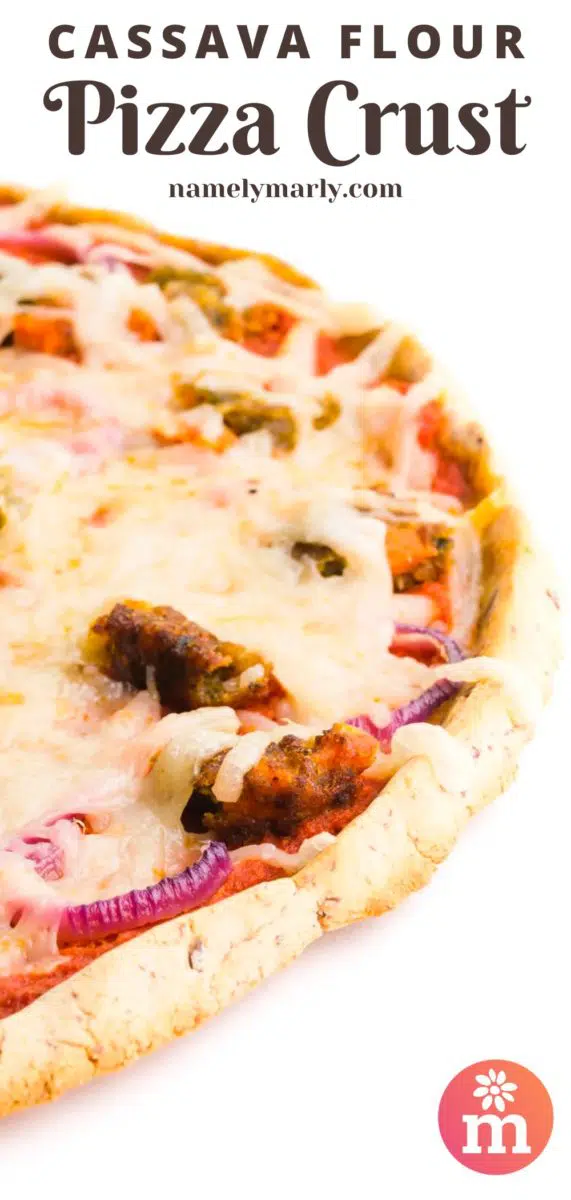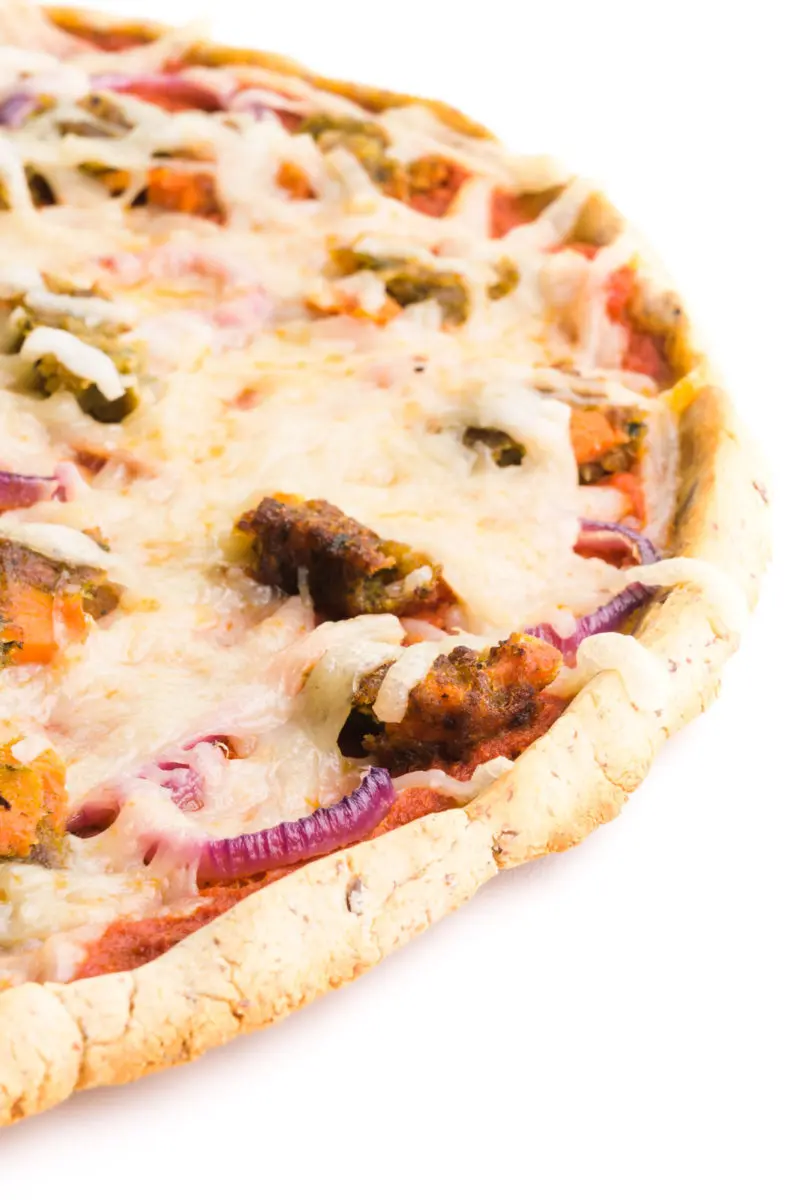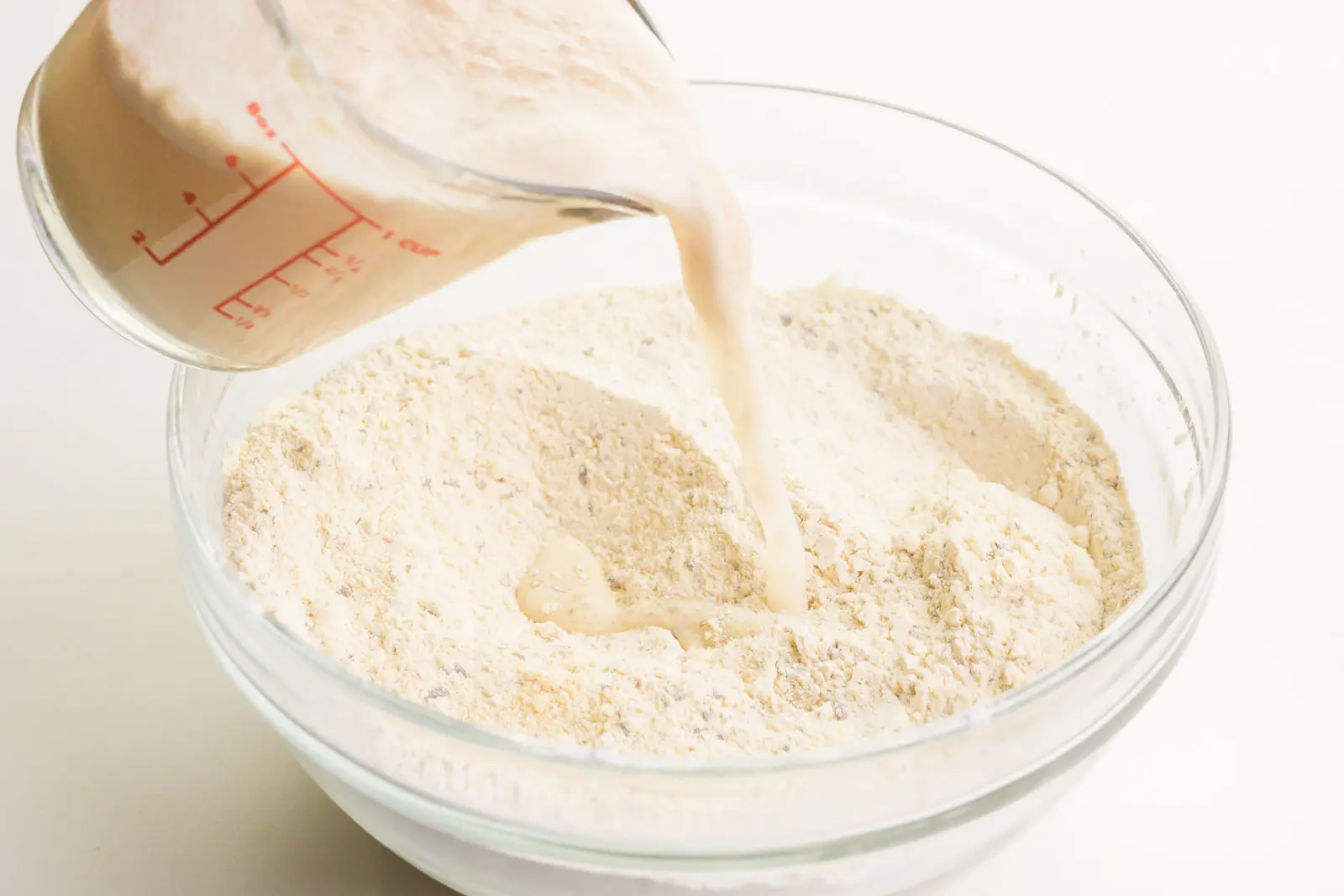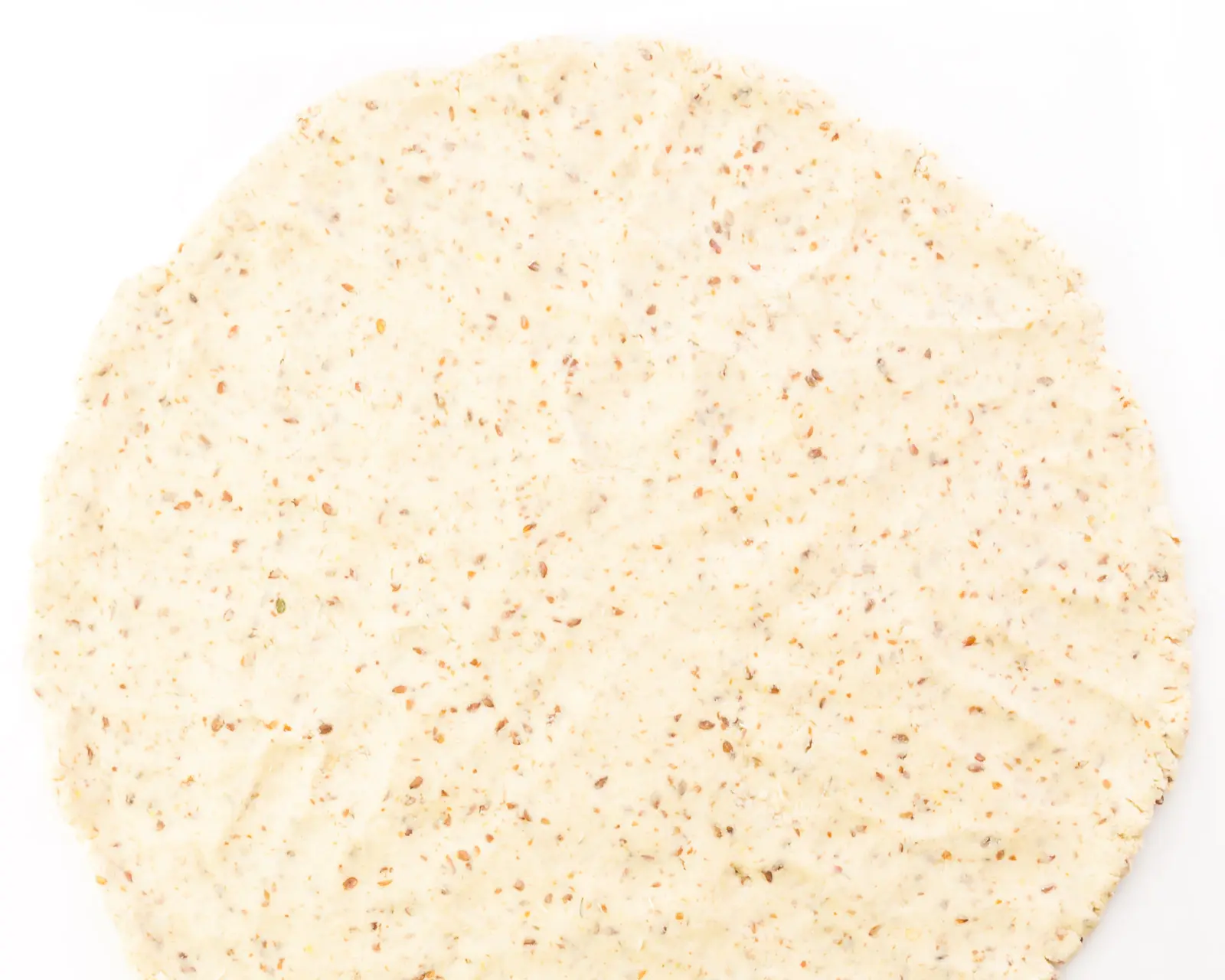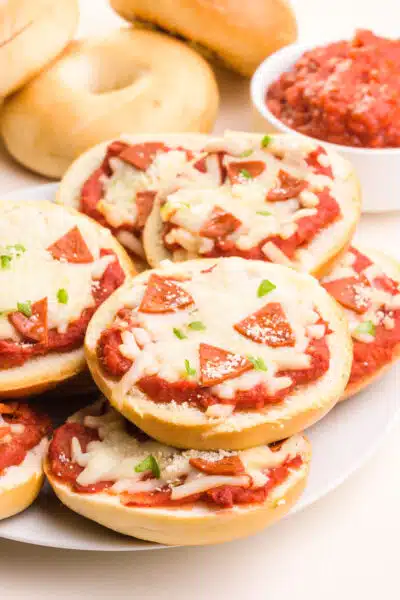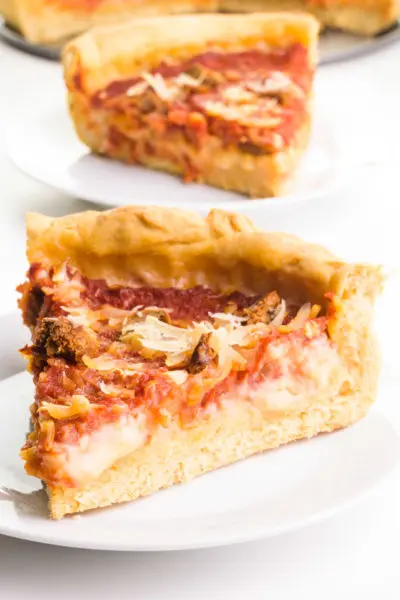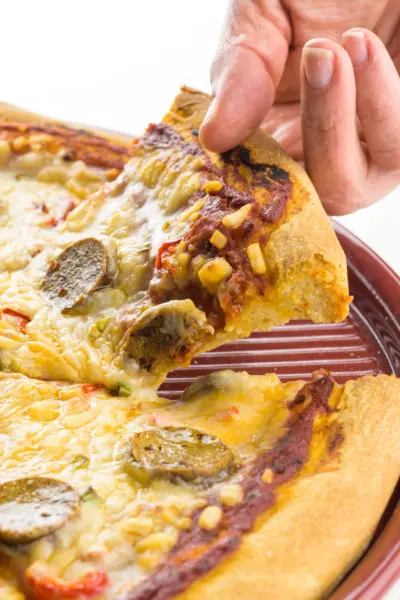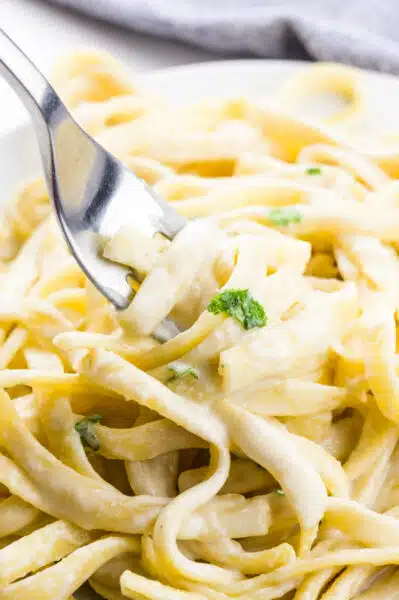Cassava Flour Pizza Crust
Looking for the perfect gluten-free crust for your pizza? This cassava flour pizza crust is baked to perfection and ready for your favorite pizza toppings. Because this crust is egg-free, use it as a foundation for your next vegan pizza night!
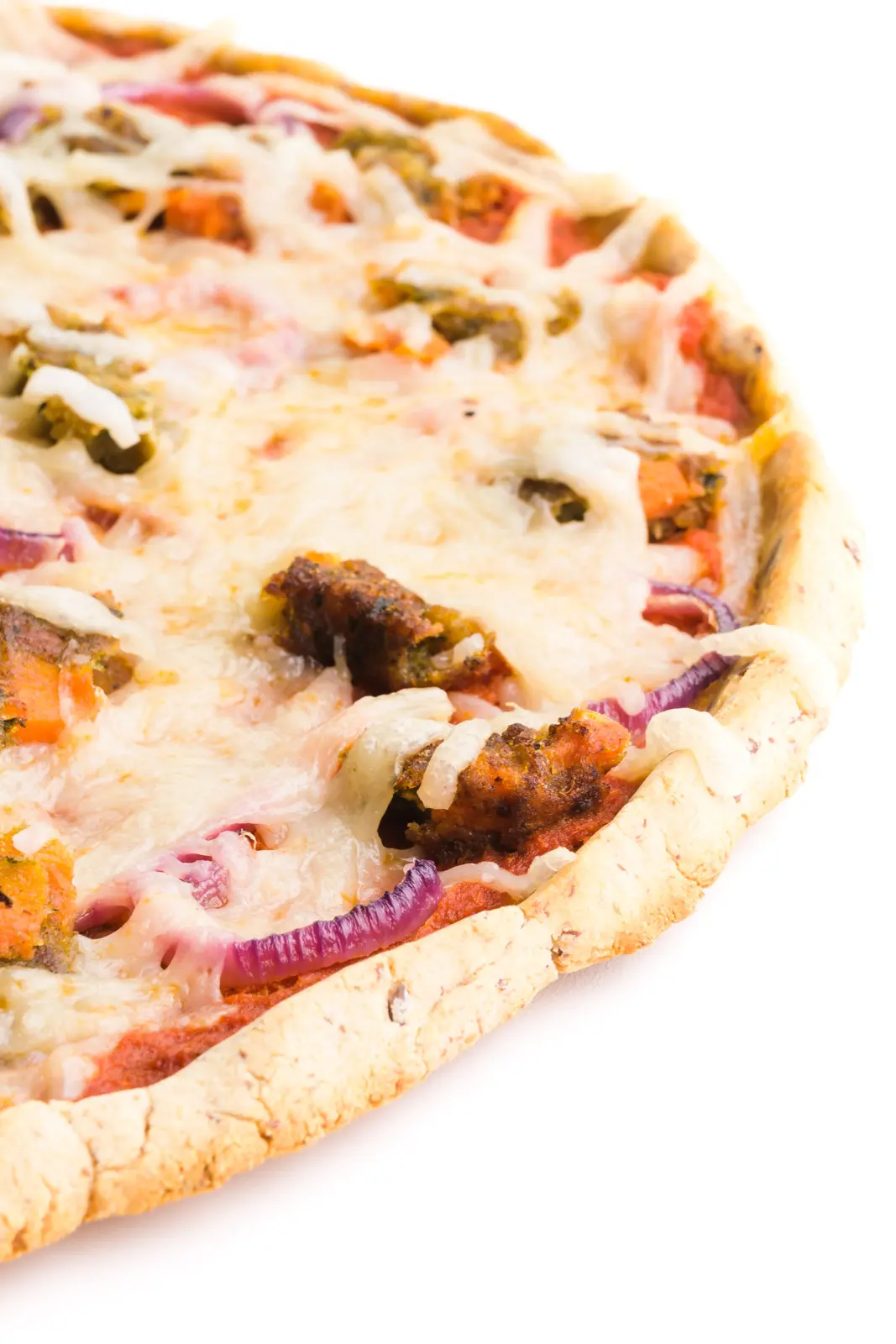
I have been searching for the perfect gluten-free pizza crust for quite some time. I’ve tried them all, but haven’t found one I really loved until today. This cassava flour pizza crust is crispy in all the right places. As an added bonus? It’s pretty easy to make, too!
What Makes This Recipe Shine?
- Combining cassava flour with almond flour keeps this pizza crust affordable and crispy
- Adding yeast gives this crust the same flavor as yeasted bread crusts
- Using seasonings like garlic powder infuses this crust with delicious flavor!
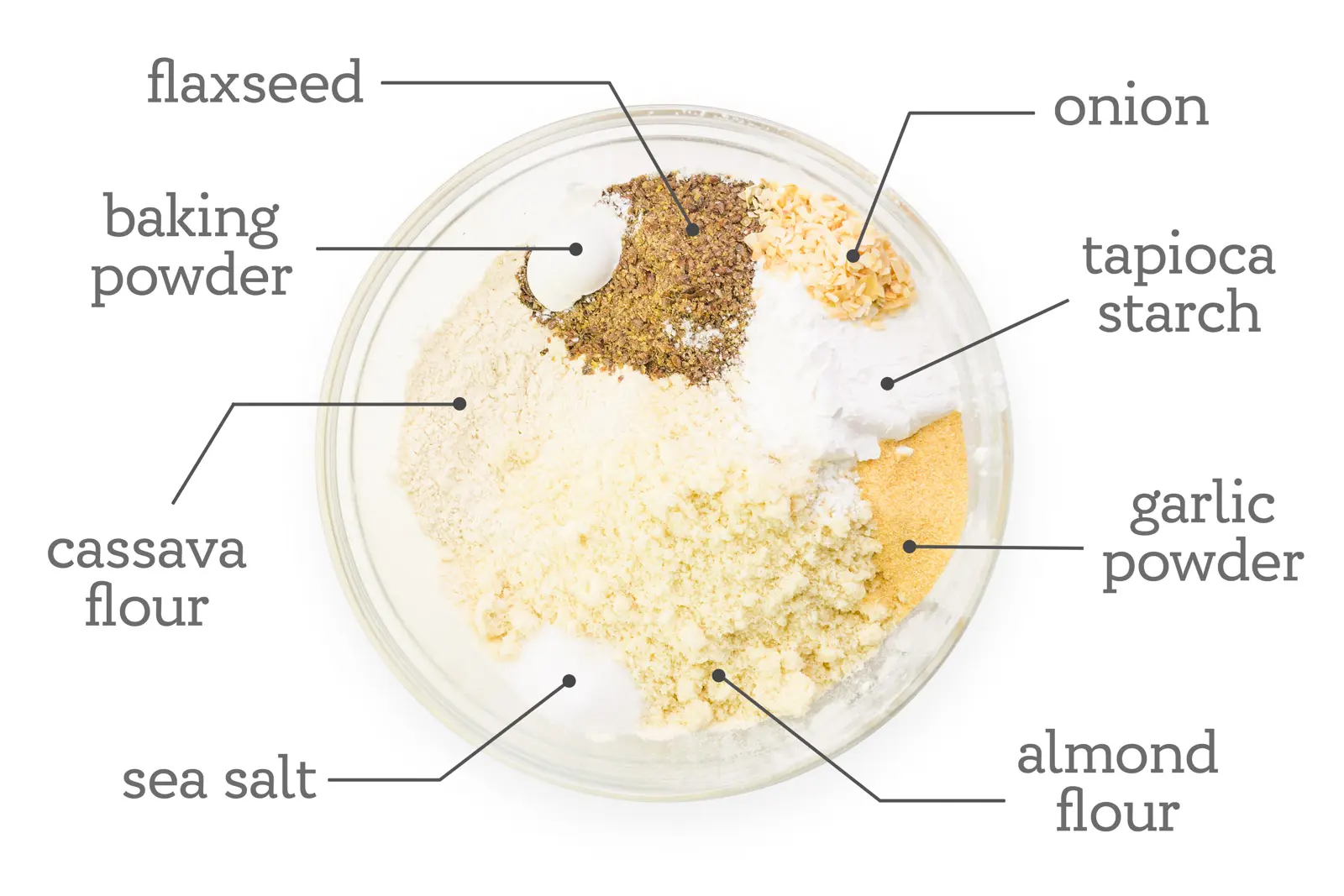
Key Ingredients
You can find the full printable recipe, including ingredient quantities, below. But first, here are some explanations of ingredients and steps to help you make this recipe perfect every time.
Here are the ingredients you’ll need for this recipe, including substitution ideas:
- Yeast — You’ll need one packet of instant or active dry yeast.
- Sugar — You can use brown sugar, maple syrup, granulated sugar, or agave nectar.
- Cassava flour — I buy this at health food stores or online.
- Almond flour — You can make homemade almond flour or buy it at health food stores. It’s also a part of my favorite vegan Costco products.
- Ground Flax
- Tapioca starch — You can find this at health food stores, or substitute cornstarch.
- Baking powder — Make sure yours is fresh by testing a bit of it in hot water. If it bubbles, your batch is good to go.
- Salt — Use either table or sea salt.
- Garlic powder
- Dehydrated onions — You can use either dehydrated onions or onion powder
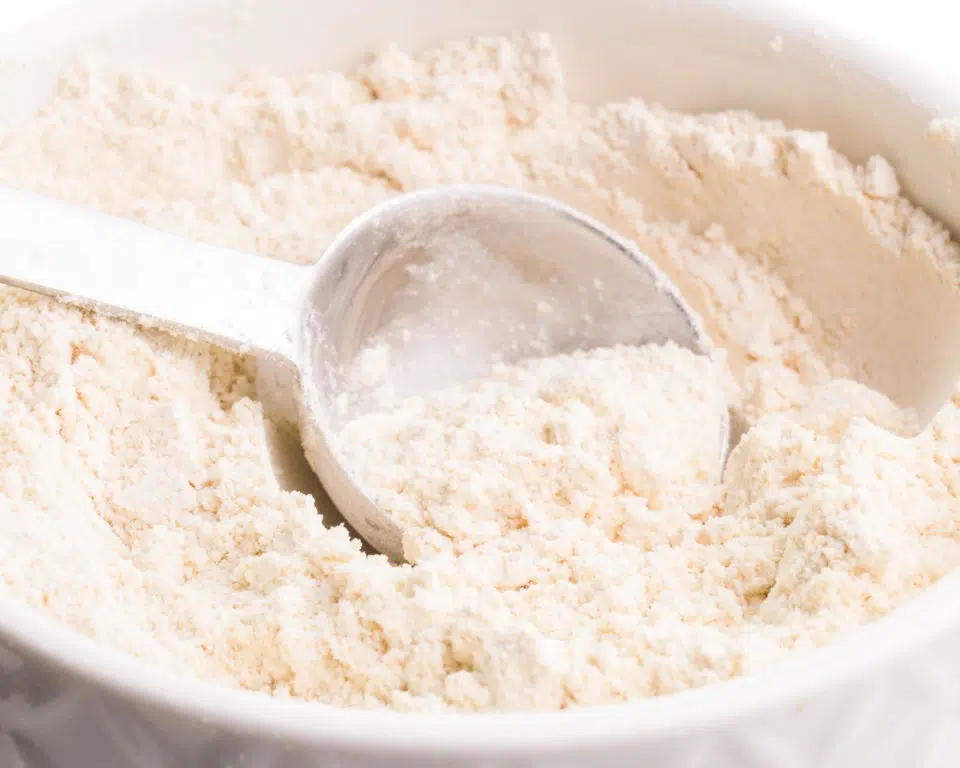
What is Cassava Flour?
Cassava is a grain-free flour made from the root of a cassava plant. It’s lower in calories and carbs than typical grain-based flour, such as all-purpose flour. As a result, it’s a healthy option for those seeking gluten-free or low-carb ingredients. You can find cassava flour in most health food stores these days, or you can buy it online. Although the packages indicate you can substitute cassava flour one for one with all-purpose flour, I think it’s best when prepared with a “partner” flour such as regular gluten-free flour or almond flour. Besides, this keeps the cost down as well. You’ll notice that it’s very light and dusty, so pour it from the bowl carefully. Measure cassava flour just as you would any flour, by stirring the flour, spooning it into a measuring cup, and leveling off with a butter knife.
How to Make This Recipe
- Add yeast and sugar to warm water and let it sit until frothy.
- Stir together the dry ingredients, from the cassava flour to the onions.
- Stir the yeast mixture into the flour.
- Press half of the dough ball on a sheet of waxed paper until roughly a 10 to 12 inch round.
- Repeat with the other half of the dough.
- Transfer dough rounds to pizza pans and bake for 8 to 10 minutes.
- Top the crusts with your favorite pizza toppings.
- Bake pizzas for 12 to 15 minutes.
- Allow baked pizzas to cool slightly before slicing and serving.
Here are more detailed instructions with step-by-step photos:
Step One: Proof the Yeast
- Pour the water into a microwave-safe bowl and microwave for about 15 to 30 seconds. You should be able to dip your finger in it and not feel much of a difference between your finger and the water.
- Add the yeast and the sugar.
- Give it a quick stir and set aside for about 5 minutes.
Step Two: Make the Dough
- In a large bowl, add the flours, ground flax, starch, baking powder, salt, garlic powder, and dehydrated onions. Use a whisk to sift and stir the ingredients together.
- Pour the frothy yeast mixture into the flour mix and stir to combine.
- Keep stirring until all the liquid is incorporated, and you can form one large dough ball.
- You can cover the bowl and let the dough sit for 30 minutes or proceed immediately with rolling it out—both options work.
Step Three: Roll Out Crusts and Pre-Bake
- When the dough is ready, preheat your oven to 400°F/200°C.
- Cut the dough ball in half and lay out a sheet of waxed paper or parchment paper on the counter.
- Press the dough with your hands into a 10 to 12 inch round, depending on your preference for crust thickness.
- Flip the dough onto a pizza pan (with dough side down) and gently pull off the waxed paper. Use the same waxed paper to roll out the second dough ball.
- Bake the crusts for 8 to 10 minutes.
Step Four: Make Pizzas
- Top the crusts with your favorite toppings, like tomato sauce, veggies, vegan meats, and vegan cheese.
- Bake for 12 to 15 minutes, keeping an eye on them after about 10 minutes to ensure the crust doesn’t burn.
- When the crust is golden brown, remove it from the oven. Allow the pizzas to cool slightly before slicing and serving.
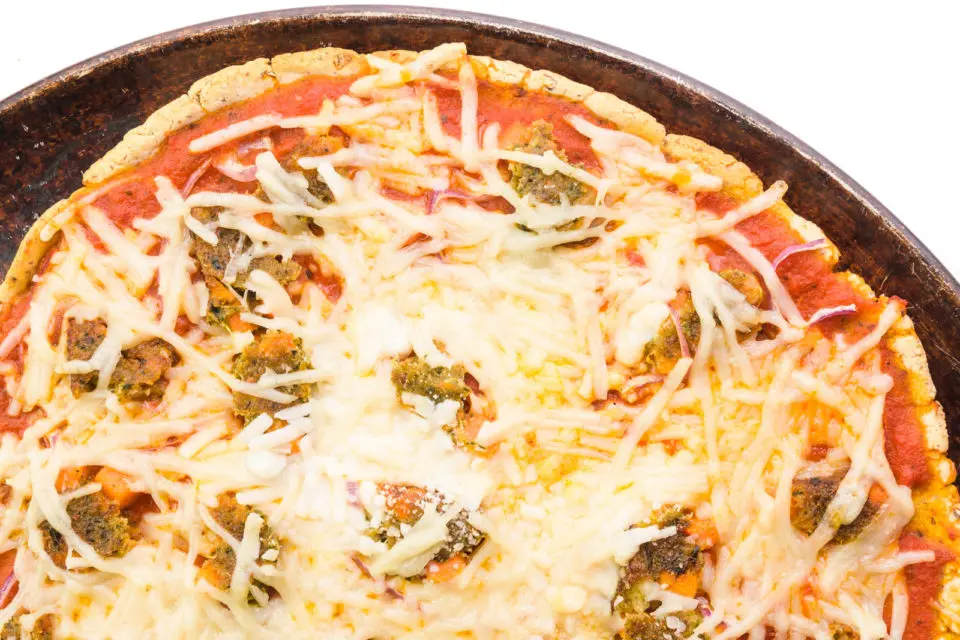
Frequently-Asked Questions
Is cassava flour good for pizza crust?
Cassava flour is an excellent choice to make pizza crust, especially when combined with almond flour. It creates a firm, crispy gluten-free crust.
What does cassava flour taste like?
Cassava flour adds an earthy, almost nutty-like flavor. That’s why adding some spices to something like a crust can be helpful.
Serving Suggestions
Serve your pizza with some favorite toppings, such as:
- Vegan Mozzarella — We use either Follow Your Heart or Daiya Vegan Cheese.
- Veggies — Chopped onions, black or green olives, mushrooms, and bell peppers are all great options.
- Vegan Meats — You can add Vegan Pepperoni, Veggie Crumbles, or even crumbled Vegan Breakfast Sausage.
Storage Tips
Cut the pizza into individual slices and store them in an airtight container in the fridge for up to 7 days. They can be frozen for up to 2 months. To heat pizza slices, cook them in a toaster oven for 2 to 3 minutes until the crust is crispy.
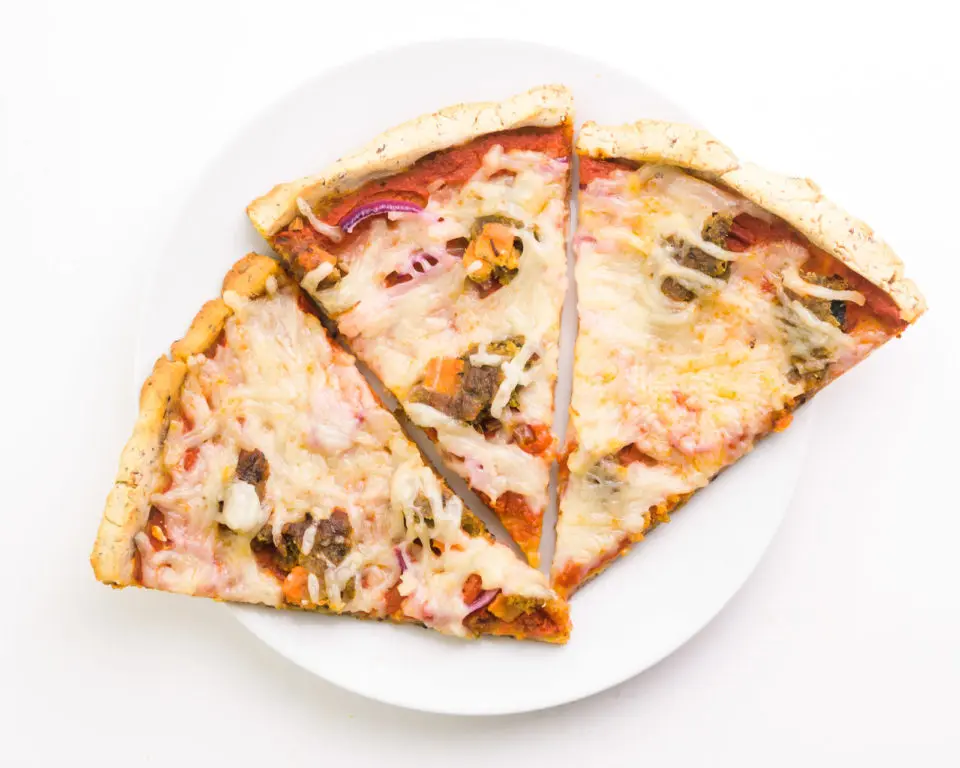
Vegan Pizza Favorites
If you love this cassava pizza crust, be sure to try these vegan pizza recipes and toppings:
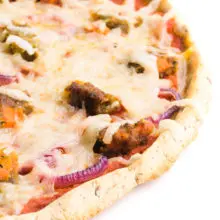
Cassava Flour Pizza Crust
Ingredients
Easy Vegan Pizza Dough
- 1 ¼ cups water
- 2 ½ teaspoons instant yeast 1 packet
- 1 teaspoon agave nectar (or maple syrup)
- 1 ½ cup cassava flour
- 1 cup almond flour
- ¼ cup ground flaxseed
- ½ cup tapioca starch
- 1 teaspoon baking powder
- 1 teaspoon sea salt
- 1 teaspoon garlic powder
- 1 teaspoon dehydrated onions (substitute onion powder)
Instructions
- Pour the water into a microwave-safe bowl and microwave for about 15 to 30 seconds. You want the water to be slightly warm, or lukewarm. You should be able to dip your finger in it and not feel much of a difference between the temperature of your finger and the water. That's perfect! Add the yeast and the sugar. Give it a quick stir and set aside for about 5 minutes.
- In a large bowl, add the flours, ground flax, starch, baking powder, salt, garlic powder, and dehydrated onions. Use a whisk to sift and stir the ingredients together.
- Pour the frothy yeast mixture into the flour mix and stir to combine. Keep stirring until all the liquid is incorporated, and you can form one large dough ball.
- You can cover the bowl and let the dough sit for 30 minutes or proceed immediately with rolling it out—both options work.
- When the dough is ready, preheat your oven to 400°F/200°C. Cut the dough ball in half and lay out a sheet of waxed paper or parchment paper on the counter. Press the dough with your hands into a 10 to 12 inch round, depending on your preference for crust thickness. Flip the dough onto a pizza pan (with dough side down) and gently pull off the waxed paper. Use the same waxed paper to roll out the second dough ball.
- Bake the crusts for 8 to 10 minutes.
- Top the crusts with your favorite toppings, like tomato sauce, veggies, vegan meats, and vegan cheese.
- Bake for 12 to 15 minutes, keeping an eye on them after about 10 minutes to ensure the crust doesn't burn.
- When the crust is golden brown, remove it from the oven. Allow the pizzas to cool slightly before slicing and serving.
(The products above contain sponsored links to products we use and recommend)
Notes
The nutrition information shown is an estimate provided by an online nutrition calculator and should not be considered a substitute for a professional nutritionist’s advice.
